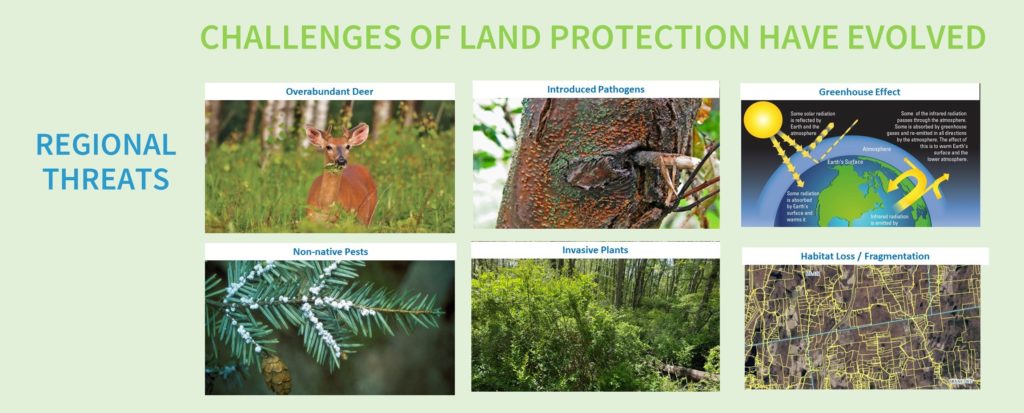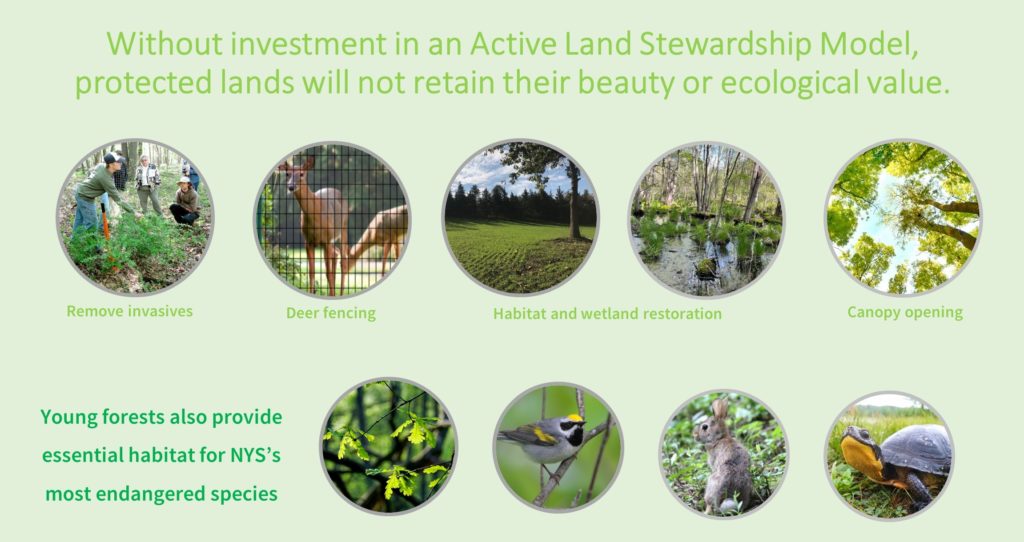Stewardship-Focused Model
Winnakee recognizes that the challenges we face in land protection have evolved, and forests require timely stewardship action if we are to sustain them into the future
Re-establishing the natural life cycles of forests – so that young trees and wildlife can thrive – is the focus of Winnakee's stewardship model
Protecting land from development is important, but today’s forests are seeing unprecedented threats to their natural regeneration of young trees that require active stewardship if they are to survive.
A healthy landscape has a mosaic of habitat types, including young forests, and supports a diversity of wildlife. In the early 1900s New York State was more farmland than forest. Today 63% of the landscape is forested with predominantly middle-aged trees. Over the past 50 years, young forests and shrub lands have dwindled, along with 60 species of mammals, songbirds and other wildlife that rely on them for habitat to survive.
The majority of Hudson Valley forests are over 40-year-old and lacking the dense regrowth of small trees and shrubs that typically occur after natural disturbances like fire, wind-storms and flooding. The major component of Winnakee’s stewardship model is to help forests reset their regenerative capabilities that re-establish their natural life cycle so that younger trees and wildlife can thrive.

The regeneration of New York’s forests is dependent
on the successful survival of tree saplings.
Forests are not regenerating on their own
- 70% of NY’s forests are not viable to regenerate without timely and comprehensive stewardship
- The Hudson Valley has the fastest growing population, and the lowest forest regeneration rates in NYS
- Dutchess County woodlands face disproportionally high critical forest health issues
View Winnakee’s Active Stewardship Model in Action. Learn more about Dutchess Gables and Burger Hill restoration cases studies.


A healthy forest is one with the ability to support robust wildlife and plant populations, as well as its surrounding human population far into the future. Given the effects of a changing climate, the lands Winnakee works every day to protect have the right characteristics to help at risk species populations as the world faces an ongoing biodiversity crisis.
Did you know that over three-fourths of our region’s most critical wildlife habitats occur in forests on private lands?
If you are interested in working with Winnakee to create sustainable forestry practices as part of a lasting legacy that protects your irreplaceable land forever, please call us today at (845) 217-0939.
